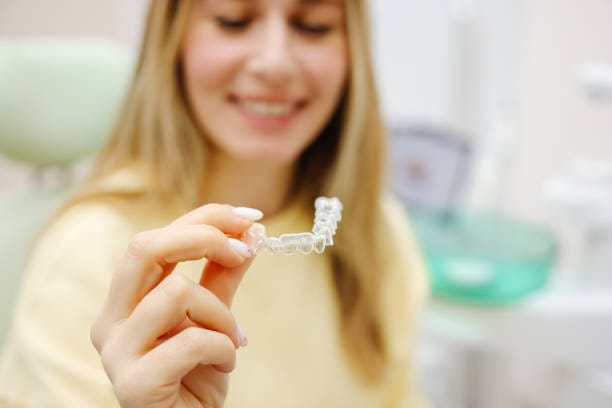Invisalign has transformed the way people think about straightening their teeth. These clear aligners are popular among adults and teenagers who want to avoid the appearance of traditional metal braces. However, Invisalign isn’t suitable for everyone. Let’s explore what teeth don’t qualify for Invisalign.
Serious Bite Problems
Invisalign can address many orthodontic issues, but it struggles with severe bite problems. If you have a significant overbite, underbite, or crossbite, traditional braces may be more effective. Braces provide the force to fix severe bite issues. They may be used with oral surgery. For individuals with serious malocclusion, braces can offer a more comprehensive solution.
Improperly-Shaped Teeth
Teeth that are very small, round, or misshapen can pose a challenge for Invisalign. The aligners need to grip the teeth properly to move them into the correct position. If your teeth are not the right shape, the aligners may not fit well and won’t be effective. In some cases, dental crowns or bonding can reshape the teeth before starting Invisalign treatment.
Severely-Rotated Teeth
Invisalign can correct rotated teeth, but there are limits. The aligners can only rotate teeth up to 20 degrees out of position. If your teeth are rotated more than this, Invisalign may not provide enough force to move them. Severely rotated teeth often come with other orthodontic issues. These issues, like crowding, can complicate treatment.
Large Gaps Between Teeth
Invisalign can close gaps between teeth, but there are limitations. If you have a gap larger than 6mm, Invisalign might not be able to close it completely. This is quite a large gap and is rare for most people. Traditional braces are often more effective for closing large gaps because they can exert more pressure over time.
Raising and Lowering Teeth
Invisalign struggles with vertical tooth movements, such as raising or lowering teeth. This process, known as extrusion or intrusion, requires significant vertical force. While Invisalign can make minor adjustments, it’s not suitable for cases that need major vertical tooth movements. Braces are better equipped for these types of corrections.
Active Gum Disease or Cavities
Before starting any orthodontic treatment, it’s essential to have healthy teeth and gums. If you have active gum disease or untreated cavities, you’ll need to address these issues first. Gum disease can weaken the support structures of your teeth, making it difficult for Invisalign to work effectively. Cavities need to be treated to prevent further dental issues during orthodontic treatment.
Previous Dental Work
Certain types of dental work can affect your eligibility for Invisalign. If you have dental implants, bridges, or TMJ issues, Invisalign might be harder. Implants and bridges are fixed and cannot move, which can limit the effectiveness of the aligners. TMJ issues may require additional treatment before or during orthodontic care.
Age Considerations
While there is no specific age limit for Invisalign, it’s typically used for teenagers and adults. Children who are still growing may not be ideal candidates because their teeth and jaws are still developing. Teenagers, on the other hand, often prefer Invisalign because it is clear and less noticeable than braces.
Dedication to Treatment
Invisalign requires a high level of commitment. The aligners must be worn for at least 22 hours a day to be effective. You must remove them only when eating, drinking (except water), brushing, and flossing. If you’re not dedicated to wearing the aligners as prescribed, the treatment won’t work. Unlike braces, which are fixed in place, Invisalign gives you the option to remove the aligners, making compliance crucial.
Conclusion
Invisalign is a fantastic option for many people looking to straighten their teeth discreetly. However, it’s not suitable for everyone. Severe bite problems, badly-shaped teeth, and big gaps can affect your eligibility for Invisalign. The same is true for severe rotations and gum disease. So can the need for big vertical tooth movement, past dental work, and a lack of dedication to treatment.
If you’re considering Invisalign, the first step is to consult with your orthodontist. They will evaluate your dental health and discuss your specific needs to determine if Invisalign is the right choice for you. By understanding Invisalign’s limits and needs, you can decide about your orthodontic care.

